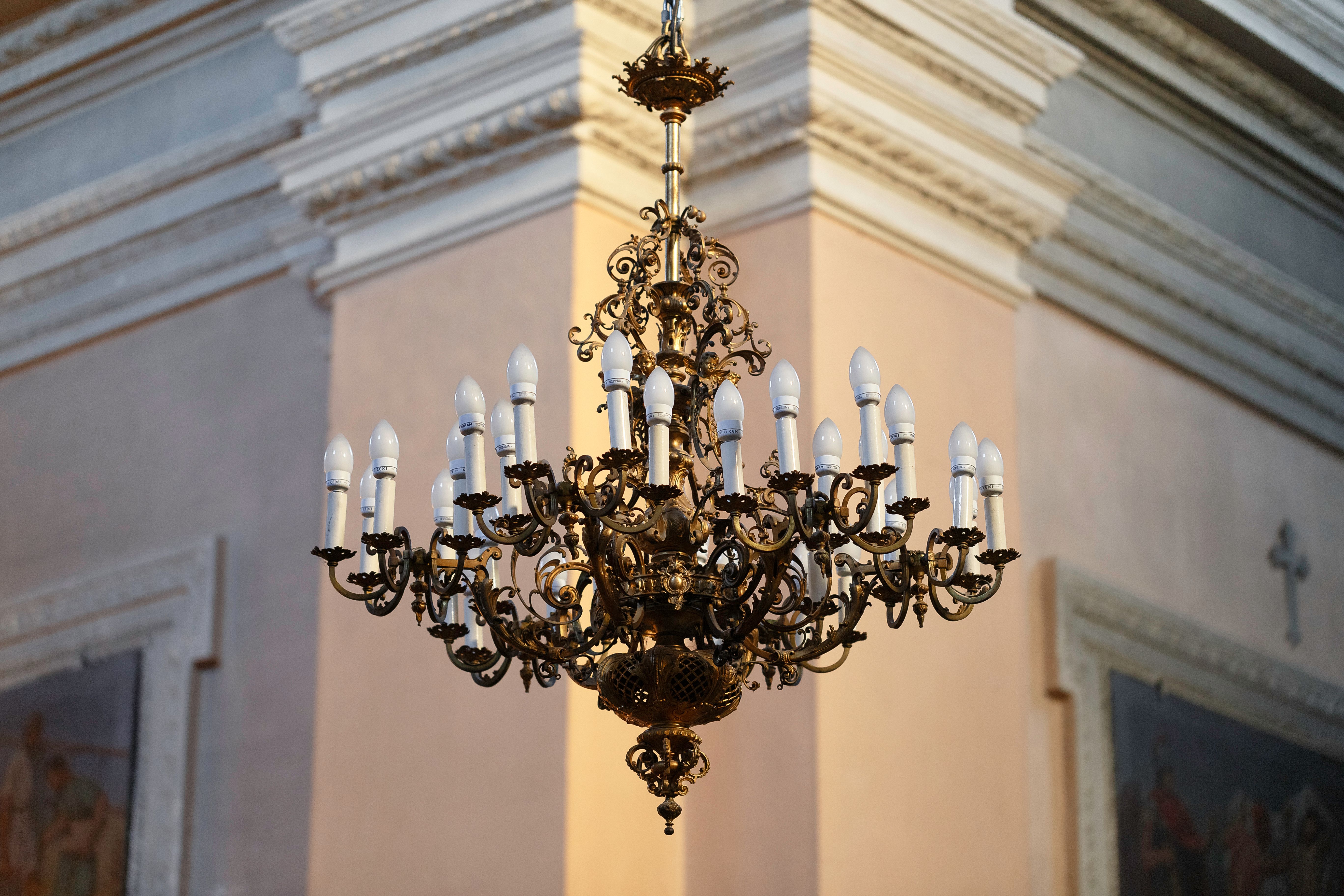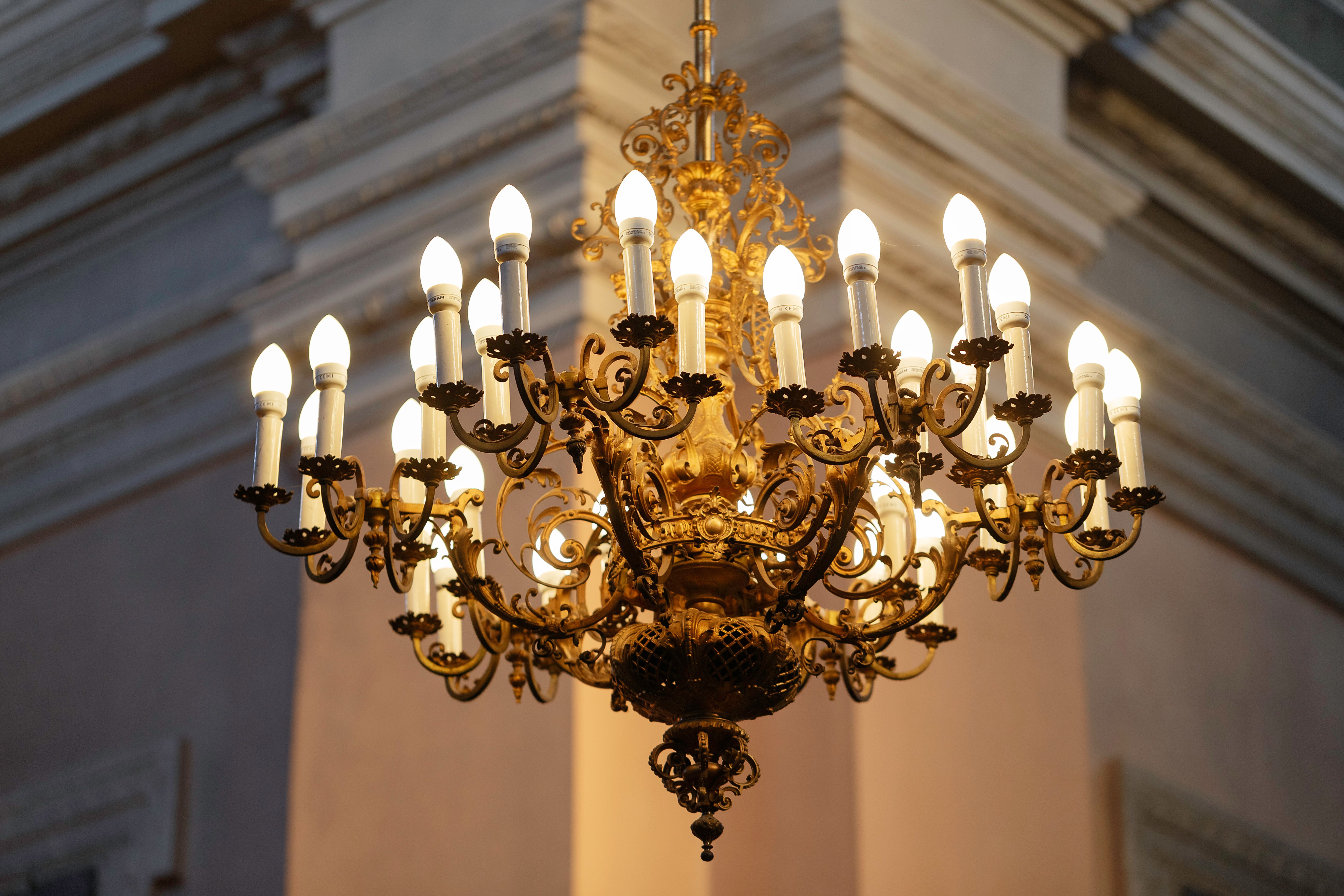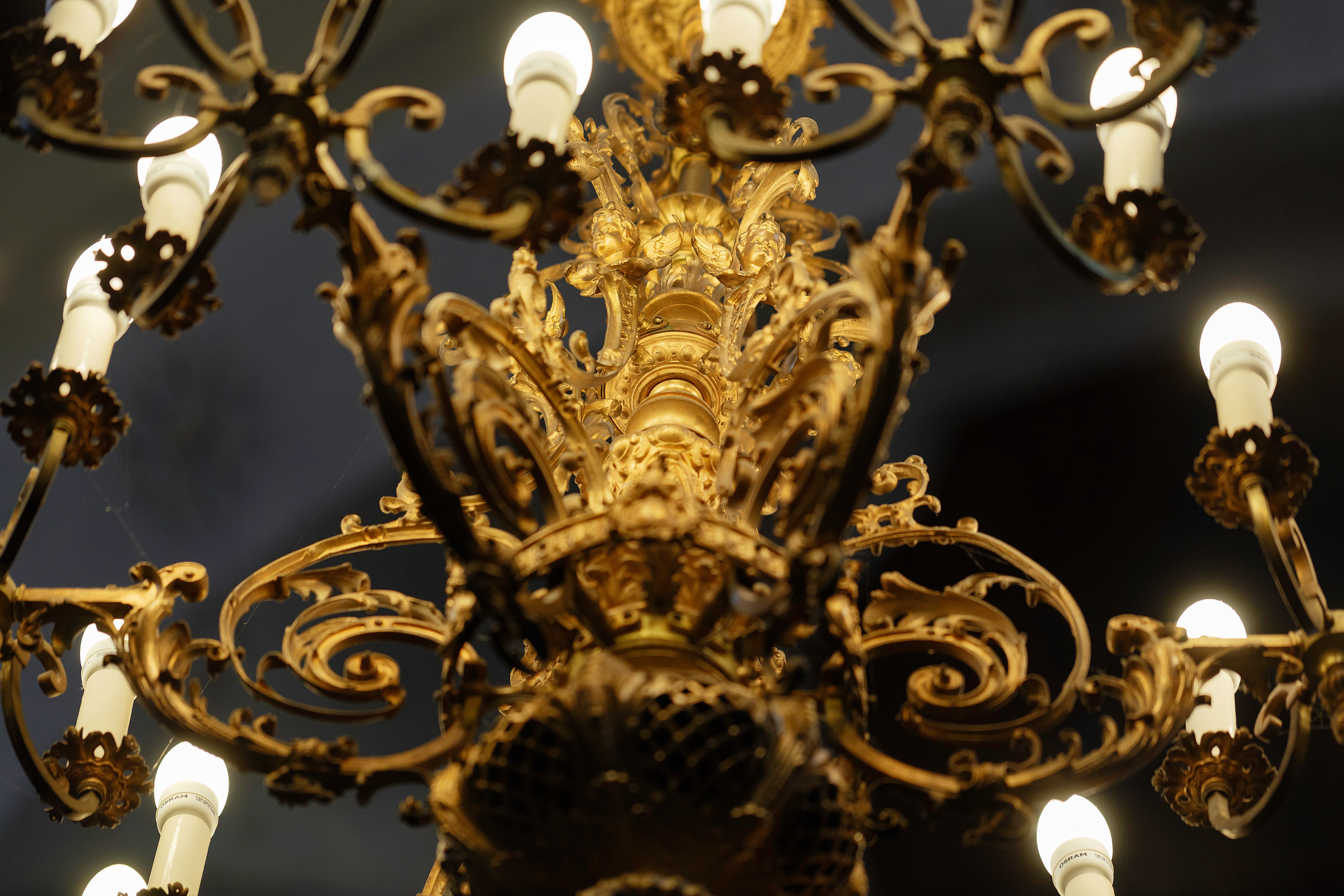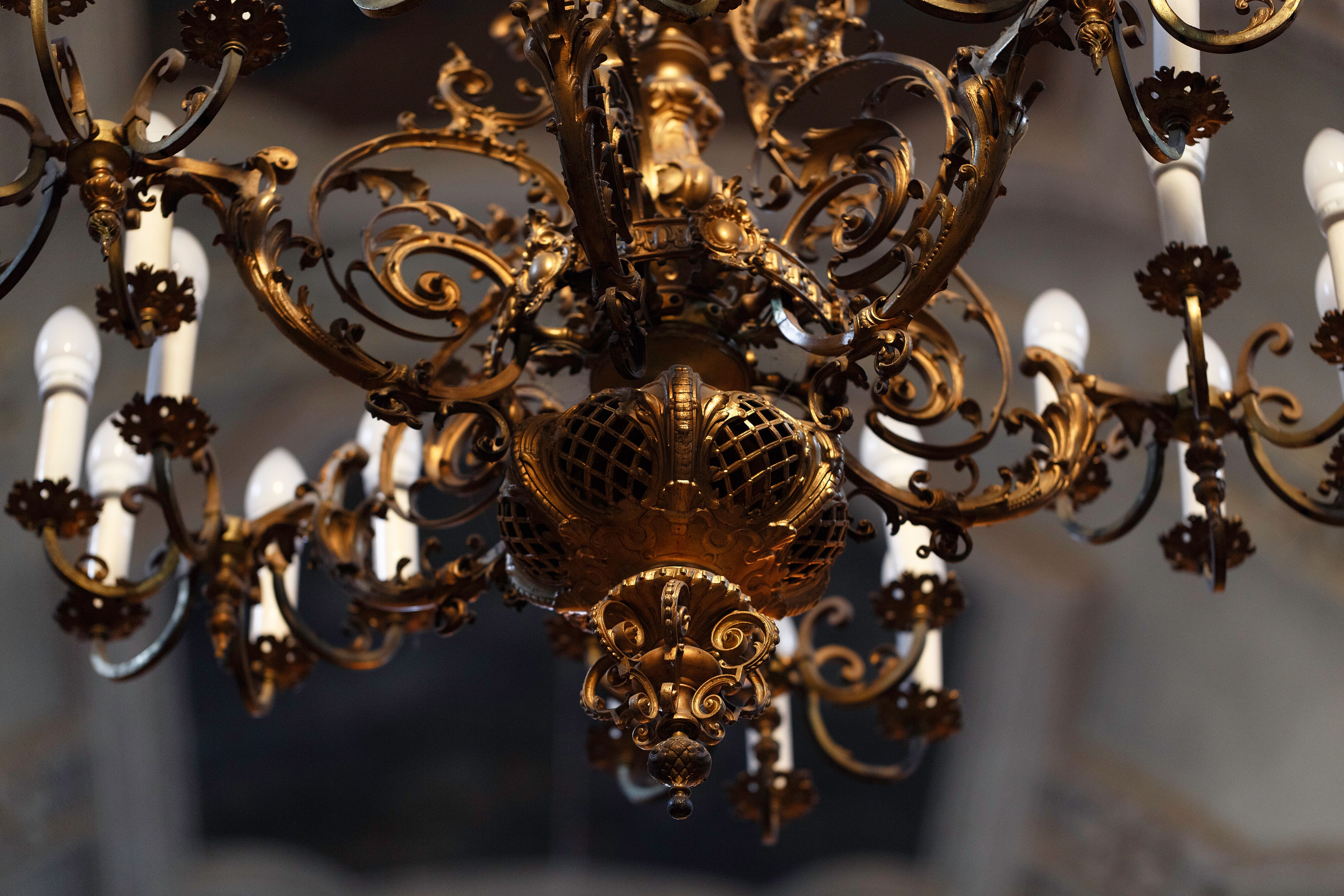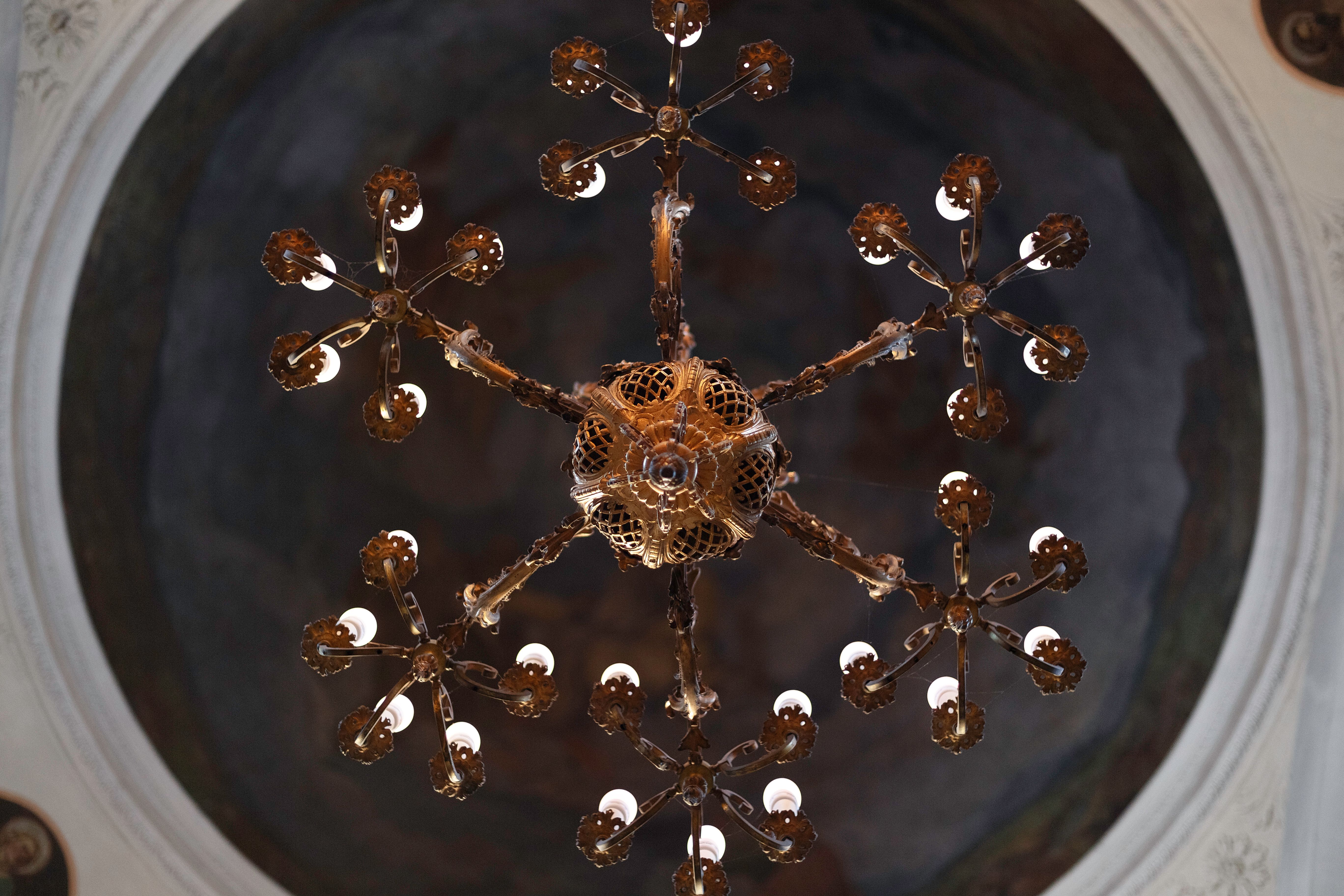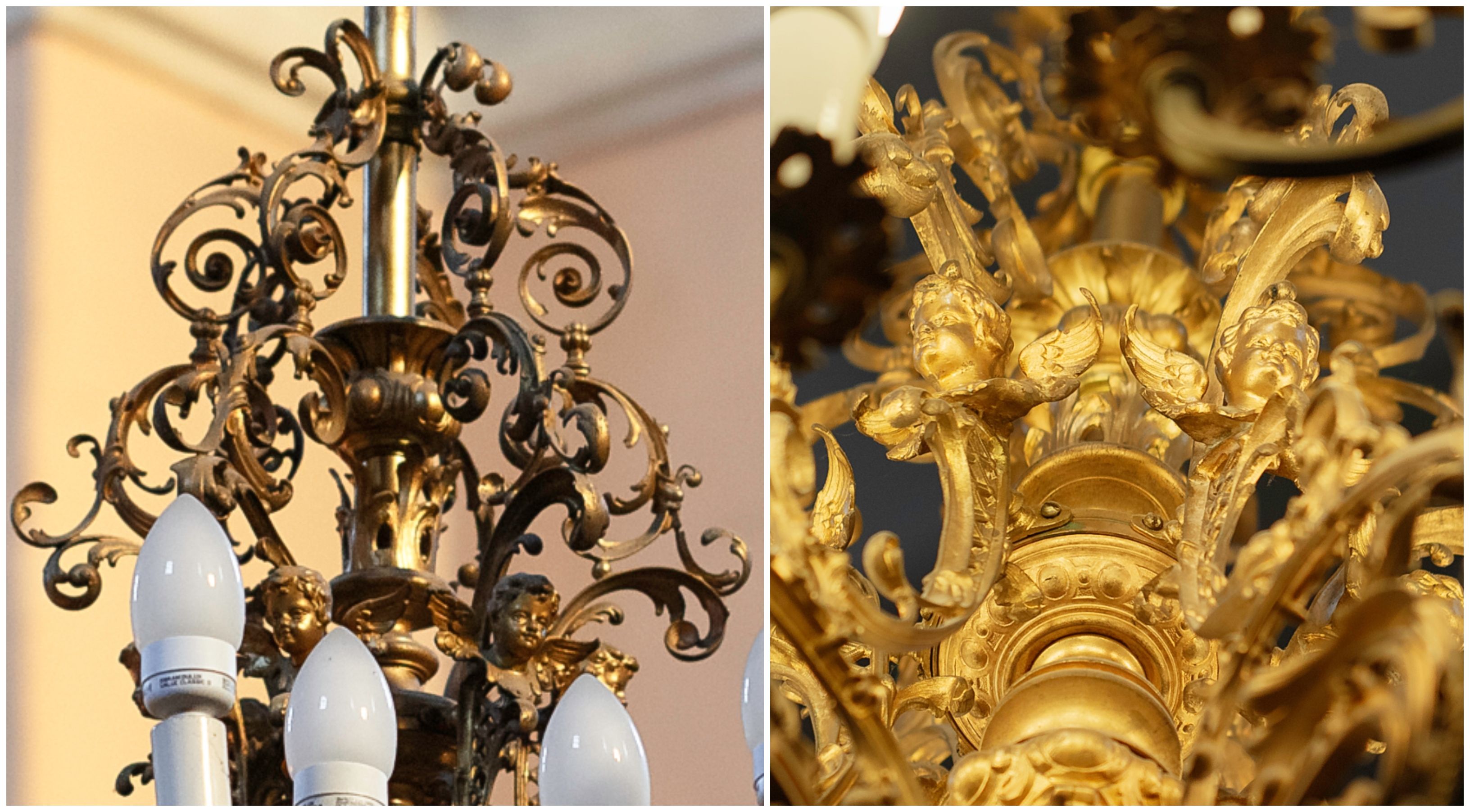The Church of the Holy Cross (Carmelitian) in Kaunas
-
Address: Gedimino str. 1, Kaunas
Time of origin: 1880–1890
Place of origin: Western Europe
Material, Technique: bronze: casting, cizeling; gilding (?)
Dimensions: height – circa 140 cm
A chandelier hanging in the Church of the Holy Cross (Carmelitian) in Kaunas belongs to a stem type. The chandelier with thirty arms is cast in bronze. A stem of the traditional structure has a rosette at the top. Details of different heights and décor are strung on it below forming a stem baluster, which turns into a sizeable little-flattened ball beneath decorated with tracery trellis*. Six arms that extend from the stem to the sides have a shape of extremely graceful and slender acanthus curves interwoven into volutes. Each arm terminates with five candlesticks. A little above them, six heads of winged angels are attached to the stem. Their place is not accidental because when the chandelier is lit, it stands out exceptionally well and functions almost like reflectors. Little above the angels’ heads, a complex tracery composition is formed from small curves.
The chandelier of wavy forms contrastingly stands out in a symmetrical and majestic interior with Renaissance features. Although the chandelier has been cast during the period of mass production, it is well-proportioned and characterised by the high quality of artistry and harmonised decoration motifs of neo-Renaissance and neo-Rococo. It is likely, although not supported by sources, acquired after 1881 when the church was returned to the Catholics by the care of the bishop and by order of the tsar. According to a photograph of the interior of the church taken in 1937 by Balis Buračas and preserved in the National M. K. Čiurlionis Art Museum, it is known that the branches of the chandelier were decorated with glass/crystal beads.
* Treillage (from old French) – a décor motif in the form of a lattice, characteristic of Baroque and Rococo applied decorative art, for example, in the decoration of interior equipment, furniture, metal liturgical accessories, etc.
Literature and sources:
- Dailės žodynas, Vilnius: Vilniaus dailės akademijos leidykla, 1999, p. 428.
